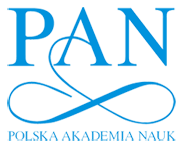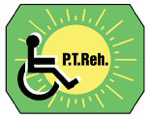


|
Current issue
Archive
Manuscripts accepted
About the journal
Editorial board
Reviewers
Abstracting and indexing
Contact
Instructions for authors
Publication charge
Ethical standards and procedures
Editorial System
Submit your Manuscript
|
3/2020
vol. 34 Original article
A comparative study of shoulder muscle strength, sense of proprioception and internal/external rotation flexibility between adolescent athletes with and without scapular asymmetry
Bihter Akınoğlu
1
,
Banu Kabak
2
,
Aydin Balci
3
,
Tuğba Kocahan
2
,
Adnan Hasanoğlu
2
Advances in Rehabilitation, 2020, 34(3), 1–7
Online publish date: 2020/09/19
Article file
- 2020-03-ar-01.pdf
[0.43 MB]
ENW EndNote
BIB JabRef, Mendeley
RIS Papers, Reference Manager, RefWorks, Zotero
AMA
APA
Chicago
Harvard
MLA
Vancouver
1. Ben Kibler W. The role of the scapula in athletic shoulder function. Am J Sports Med. 1998; 26(2): 325-37. 2.
Wilk KE, Arrigo C. Current concepts in the rehabilitation of the athletic shoulder. J Orthop Sports Phys Ther. 1993; 18(1): 365-78. 3.
Kibler W. Biomechanical analysis of the shoulder during tennis activities. Clin Sports Med. 1995; 14(1): 79-85. 4.
Phadke V, Camargo P, Ludewig P. Scapular and rotator cuff muscle activity during arm elevation: a review of normal function and alterations with shoulder impingement. Braz J Phys Ther. 2009; 13(1): 1-9. 5.
Kibler BW, Sciascia A, Wilkes T. Scapular dyskinesis and its relation to shoulder injury. J Am Acad Orthop Surg. 2012; 20(6): 364-72. 6.
Gumina S, Carbone S, Postacchini F. Scapular dyskinesis and SICK scapula syndrome in patients with chronic type III acromioclavicular dislocation. Arthroscopy. 2009; 25(1): 40- 5. 7.
Turgut E, Duzgun I, Baltaci G. Scapular asymmetry in participants with and without shoulder impingement syndrome; a three-dimensional motion analysis. Clin Biomech. 2016; 39: 1-8. 8.
Karagiannakis D, Athanasopoulos S, Mandalidis D. Scapular muscles’ activity in female volleyball players with scapular asymmetry in the resting position. J Bodyw Mov Ther. 2018; 22(3): 580-5. 9.
Sahin E, Dilek B, Baydar M, Gundogdu M, Ergin B, Manisali M, et al. Shoulder proprioception in patients with subacromial impingement syndrome. J Back Musculoskelet Rehabil. 2017; 30(4): 857-62. 10.
Kawasaki T, Yamakawa J, Kaketa T, Kobayashi H, Kaneko K. Does scapular dyskinesis affect top rugby players during a game season? J Shoulder Elbow Surg. 2012; 21(6): 709-14. 11.
Oyama S, Myers JB, Wassinger CA, Daniel Ricci R, Lephart SM. Asymmetric resting scapular posture in healthy overhead athletes. J Athl Train. 2008; 43(6): 565-70. 12.
Ludewig PM, Reynolds JF. The association of scapular kinematics and glenohumeral joint pathologies. J Orthop Sports Phys Ther. 2009; 39(2): 90-104. 13.
Kim S-R, Kang M-H, Bahng S-Y, An J-K, Lee J-Y, Park S-Y, et al. Correlation among scapular asymmetry, neck pain, and neck disability index (NDI) in young women with slight neck pain. J Phys Ther Sci. 2016; 28(5): 1508-10. 14.
Shih Y-F, Wang Y-C. Spiking Kinematics in Volleyball Players with Shoulder Pain. J Athl Train. 2019; 54(1): 90-8. 15.
Lin Y-L, Karduna A. Exercises focusing on rotator cuff and scapular muscles do not improve shoulder joint position sense in healthy subjects. Hum Mov Sci. 2016; 49: 248-57. 16.
Curtis T, Roush JR. The lateral scapular slide test: A reliability study of males with and without shoulder pathology. N Am J Sports Phys Ther. 2006; 1(3): 140-6. 17.
Odom CJ, Taylor AB, Hurd CE, Denegar CR. Measurement of scapular asymmetry and assessment of shoulder dysfunction using the lateral scapular slide test: a reliability and validity study. Phys Ther. 2001; 81(2): 799-809. 18.
Edwards TB, Bostick RD, Greene CC, Baratta RV, Drez D. Interobserver and intraobserver reliability of the measurement of shoulder internal rotation by vertebral level. J Shoulder Elbow Surg. 2002; 11(1): 40-2. 19.
Hayes K, Walton JR, Szomor ZL, Murrell G. Reliability of five methods for assessing shoulder range of motion. Aust J Physiother. 2001; 47(4): 289-96. 20.
Rice, M.E. and G.T. Harris. Comparing effect sizes in follow-up studies: ROC Area, Cohen's, and r. Law Hum Behav. 2005; 29(5): 615-20. 21.
Seitz AL, McClelland RI, Jones WJ, Jean RA, Kardouni JR. A comparison of change in 3D scapular kinematics with maximal contractions and force production with scapular muscle tests between asymptomatic overhead athletes with and without scapular dyskinesis. Int J Sports Phys Ther. 2015; 10(3): 309-18. 22.
Merolla G, De Santis E, Campi F, Paladini P, Porcellini G. Supraspinatus and infraspinatus weakness in overhead athletes with scapular dyskinesis: strength assessment before and after restoration of scapular musculature balance. Musculoskelet Surg. 2010; 94(3): 119-25. 23.
Merolla G, De Santis E, Sperling JW, Campi F, Paladini P, Porcellini G. Infraspinatus strength assessment before and after scapular muscles rehabilitation in professional volleyball players with scapular dyskinesis. J Shoulder Elbow Surg. 2010; 19(8): 1256-64. 24.
Hannah DC, Scibek JS, Carcia CR. Strength profiles in healthy individuals with and without scapular dyskinesis. Int J Sports Phys Ther. 2017; 12(3): 305-13. 25.
McClure P, Tate AR, Kareha S, Irwin D, Zlupko E. A clinical method for identifying scapular dyskinesis, part 1: reliability. J Athl Train. 2009; 44(2): 160-4. 26.
Lin Y-L, Karduna A. Errors in shoulder joint position sense mainly come from the glenohumeral joint. J Appl Biomech. 2017; 33(1): 32-8. 27.
Borstad JD, Ludewig PM. The effect of long versus short pectoralis minor resting length on scapular kinematics in healthy individuals. J Orthop Sports Phys Ther. 2005; 35(4): 227-38. 28.
Borich MR, Bright JM, Lorello DJ, Cieminski CJ, Buisman T, Ludewig PM. Scapular angular positioning at end range internal rotation in cases of glenohumeral internal rotation deficit. J Orthop Sports Phys Ther. 2006; 36(12): 926-34.
This is an Open Access journal, all articles are distributed under the terms of the Creative Commons Attribution-NonCommercial-ShareAlike 4.0 International (CC BY-NC-SA 4.0). License (http://creativecommons.org/licenses/by-nc-sa/4.0/), allowing third parties to copy and redistribute the material in any medium or format and to remix, transform, and build upon the material, provided the original work is properly cited and states its license.
|
    |